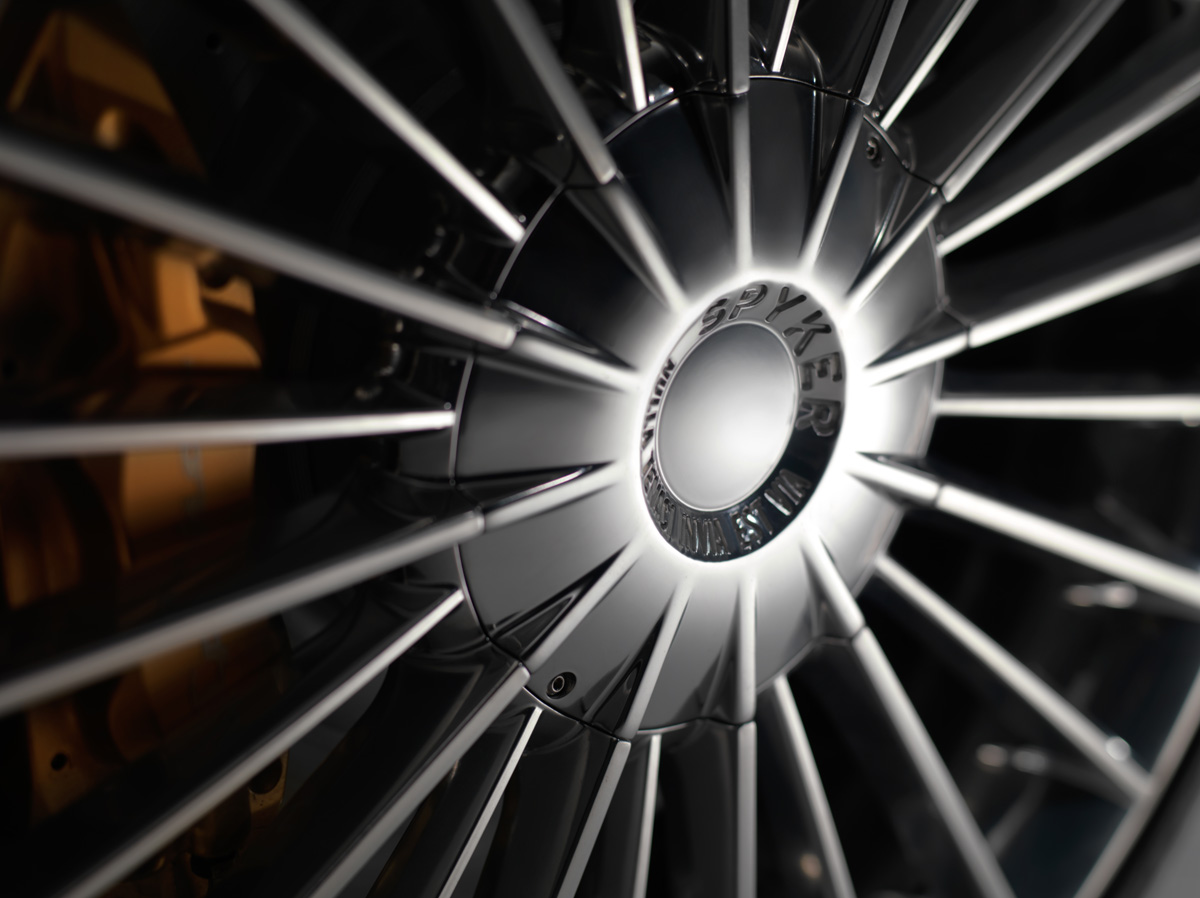An Italian arts dynasty in the most
German part of France.
There have been many great families throughout history, great political families like the Habsburgs, banking families like the Rothschilds, and oil families like the Rockefellers. The Bugatti family too, was a great family. Its members were exceptional in their chosen fields, and each left a lasting legacy. Many people are familiar with the name Bugatti and the automobiles that bear it, most recently the world-beating Veyron hypercar and the EB110 of the early to-mid 1990s. These automobiles, while spectacular in their own right, are only spiritual successors to that great name. To get an idea of how truly unique and adventurous the Bugattis were, we must look back.

Carlo Bugatti:
Carlo Bugatti was born in 1856 in Lombardy, in what is now Italy. He studied initially at the Brera Academy in Milan and soon after, went to France to study architecture at the famous Académie des Beaux Arts. He returned to Italy after finishing his training as an architect and began to produce furniture. His work grew in popularity and eventually he emigrated to France to continue his work. Carlo Bugatti’s furniture blended classical Moorish, Japanese, Chinese, and Gothic styles which when paired with his sometimes unconventional use of materials, made for some fairly breathtaking pieces. The intricacy of much of his work cannot be overstated. To see Carlo Bugatti’s furniture in person is to be transfixed by it.

In 1880, Carlo married Teresa Lorioli and in 1881 she gave birth to their first child, Ettore. In 1883 Ettore was joined by his sister Deanice, followed by his brother Rembrandt in 1884. In 1888, Carlo had his first showing of furniture at the Fine Arts Fair Milan, later that year he exhibited his work in London, receiving an honorary prize. In 1900, his work took the silver medal at the World’s Fair in Paris. As the world embraced Art Nouveaux, Bugatti’s work continued to increase in popularity with his work gracing the Turkish Salon at the famous Waldorf Astoria hotel in New York. Eventually Carlo and his family moved back to France, for good this time, and it was during this time that he began, at the age of 48, to experiment with other art forms.
Carlo was, by nature, an industrious man, and one who wouldn’t be put off by a challenge. It was this attitude that eventually led him to try his hand at silversmithing. In case you’re unaware, silversmithing is an incredibly difficult art to master, and requires training and decades of practice to become truly skilled, unless of course you’re Carlo Bugatti. Despite the derision of the French silversmithing community, he set about learning the medium and almost immediately produced pieces of exquisite beauty, with his early works winning several awards.
The Bugatti patriarch continued to work in furniture and silver up to the first World War. In 1910 he and Teresa moved from Paris to the town of Pierrefonds, even serving a term as mayor during the war. At this time he began to paint, and devoted himself almost completely to this new medium. Again, he was successful almost immediately at this new venture.

In 1935, Carlo and Teresa settled in Alsace, near Ettore’s family. Teresa died shortly after. Carlo then took up residence in an apartment in Molsheim at the Bugatti factory. He died in 1940. By the end of his life, Carlo Bugatti’s famed furniture had fallen out of style, though in recent years it has seen a resurgence in popularity and many of his pieces fetch handsome prices at auctions all over the world.
Ettore Bugatti:
Ettore Arco Isidoro Bugatti is, unquestionably, the Bugatti which history remembers most clearly. Being born into a family such as his left him with some large shoes to fill, but rather than take up the family’s artistic mantle, he chose to embrace his love of things powered by engines. At age 17 he entered into an apprenticeship with a bicycle and tricycle manufacturer and soon after built his first powered vehicle, a twin-engined tricycle. His engineering skill and eye for detail soon caught the eye of a Baron de Dietrich who offered a young Ettore a job designing vehicles at his factory in Alsace. In the following years Bugatti designed several automobiles and entered many races. In 1904, he left De Dietrich and founded his first company with a partner which lasted just two years. After a stint as Production Director at Deutz he designed the famous Peugeot Type 19 Bébé before starting his own company in an old dye factory in Molsheim, Alsace.

The Type 13, introduced in 1913, is considered the first true Bugatti. These cars were the first produced in the Molsheim factory and were in production through 1920. The Type 13 was small and like all Bugattis, extremely advanced for its time. It was on the Type 13 that Ettore first bestowed the name pur-sang or pure blood, another name for thoroughbred. Road going models made use of an eight valve head, but five of the racing models got special sixteen valve heads which greatly increased their power to upwards of 30hp. That doesn’t seem like much but given that the car weighed a scant 660lbs, this made it an absolute rocket ship in its day. Other variants of the Type 13 followed including the Type 15, Type 17, Type 22 and Type 23. After the close of WW1, the Type 23 was brought back with the multivalve engine and nearly 2000 models were sold.

Bugatti really began to come into its own with the introduction of the legendary Type 35, a vehicle that remains today, some 90 plus years after its debut, one of the most successful race cars ever created. The chassis is credited with some 2000 wins overall. The Type 35 is also the first Bugatti to feature a fully realized Bugatti arch-shaped radiator, a distinctive feature that carries through to the Veyron of today. The Type 35’s straight-eight engine was available in several configurations throughout its life. It could be had naturally aspirated or supercharged, with plain or more exotic roller bearing crankshafts, and in several displacements. These engines were incredibly advanced and insanely powerful for their time, with Bugattis from this period easily able to keep up with today’s modern traffic.
The Bugatti Type 41 ‘Royale’ was Ettore’s next great achievement and also his great folly. Designed to be the largest, most powerful, most luxurious, and most expensive car in the world, Ettore had planned to sell the Royale to royalty. However, the financial collapse and subsequent depression meant that not even European royalty was willing to spend the vast sums necessary to acquire the car. Of the six Type 41s built, Bugatti was able to sell three. The Royale was nearly 21 feet in length and weighed over 7000 pounds. This behemoth received its motivation from a 779 cubic inch straight-eight engine. Even today, in a world filled with Rolls Royce Phantoms, Hummers, and Escalades, the Royale remains one of the largest automobiles ever built. One of the most distinctive and beautiful features of the Royale is the radiator cap. It is based on a sculpture of a rearing elephant originally done by Ettore’s brother, Rembrandt Bugatti.
One of the events that most deeply affected Ettore Bugatti’s life was the untimely death of his son, fellow car designer Jean Bugatti in 1939. Jean had been testing a racing variant of his spectacular Type 57 Bugatti on the factory grounds in Molsheim when he swerved to avoid a drunken cyclist and crashed into a tree. Ettore lost a great deal of enthusiasm after this and coupled with the fact that Jean was the company’s top engineer and designer, the Bugatti company’s fortunes began to fade. The factory in Molsheim was destroyed during WW2 and the company never truly recovered.

Ettore Bugatti died in an American hospital in Paris in 1947 after suffering a sharp decline in his mental faculties and was buried in the family plot in Dorlisheim, Alsace. The company that bore his name was revived in the 1950s for the ill-fated Type 101 and again in the 1990s with the EB110 and then finally, successfully by the Volkswagen group and their 1000hp Veyron.
Rembrandt Bugatti:
The life of Rembrandt Bugatti was both tragic, and short. Born in Milan in 1884, Rembrandt spent much of his childhood in his father’s workshop. It was during this time that he was introduced to sculpting and the material plasticine by Prince Paolo Troubetzkoy, a sculptor and friend of the Bugatti clan. Eventually Rembrandt began to work with an art foundry to produce his works in bronze. These statues were championed by a gallery owner named Adrian Hébrard. The portrait-like qualities of Rembrandt Bugatti’s sculpture found many admirers throughout the world and won him significant acclaim.

Rembrandt Bugatti held a deep and abiding life-long love of animals and it is because of this, perhaps, that he was able to capture the interior emotions of even the most exotic creatures. He spent much of his time at a wildlife sanctuary in Paris or at the Antwerp Zoo. During World War 1, Rembrandt volunteered as a paramedic in a hospital in Antwerp. The horror of war affected him deeply and triggered severe depression, which was exacerbated by financial problems. Worst of all, perhaps, was the Antwerp Zoo’s decision to kill many of its animals due to lack of food as a result of the war. The loss of so many of his subjects proved to be too much for Rembrandt Bugatti and in the end, he took his own life. He rests, along with Carlo and Ettore, in the Bugatti family plot in Dorlisheim.
His sculpture is still incredibly sought after today with examples selling at auction for millions of dollars. The thing that makes his sculptures unique is that they are not merely sculptures of animals, but portraits of specific animals. One excellent example of this is a sculpture of an exotic cat from the Antwerp Zoo who had a broken tail tip. This particular piece is one of his most valuable.

This is by no means a comprehensive overview of the Bugattis. Much like any great family, there are countless details and secrets, documents and photos, and things lost to time that make it almost impossible to paint a truly complete picture of who they were. There are some collectors out there who are trying to do that very thing. Famed California collector and philanthropist Peter Mullin is one of them. The museum that bears his name is a temple to all things Bugatti and art deco. This was especially apparent with the recent special exhibition “The Art of the Bugattis”. To walk into a concrete building, in a sleepy corner of Oxnard, California and be so deeply and instantly immersed in the world they the Bugatti family built was incredible. Peter Mullin has gone, and will continue to go to great lengths to preserve the Bugatti legacy by safeguarding their finest works from the world over.
If you have even a passing interest in Art Deco, French automobiles, or (hopefully by now) the Bugatti family, please make a point of visiting Mr. Mullin’s fabulous museum. The museum is typically open every other Saturday from 10:00 AM to 3:00 PM. Tickets must be purchased in advance. For more information on the Mullin Museum please visit www.mullinautomotivemuseum.com and for more information on the Bugatti company and family please visit www.bugatti.com/en/home.html.
Photos courtesy of V3LLUM and Jessica Walker.






